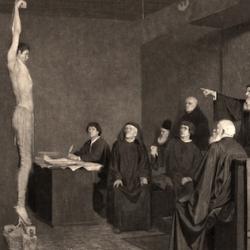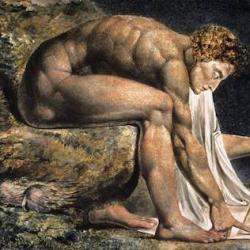Rupert Sheldrake’s latest book, The Sense of Being Stared At , is full of amusing and entertaining oddities, as Sheldrake continues his assault on reductionistic modern science. At the outset of a treatment of “paranormal” phenomena, Sheldrake points out that such things as telepathy are “para-normal” only if we have already defined
“normal” in terms that are compatible with modern science. If our minds are more complex and extended than modern science suggests, then there is no “para” about it ?Eit’s just normal, though some people might have better developed “sixth” and “seventh” senses than others, just as some people can naturally see better than others. Sheldrake thinks that these “paranormal” senses are in theory as susceptible to scientific investigation (i.e., rigorous testing) as anything, but points out that science excludes such phenomena from scientific investigation by the sheer tyranny of definition.
Sheldrake argues that our minds extend out from us, and are not confined to our heads. He challenges the notion that our experience of the world is “actually” taking place within our skulls. According to modern science, my experience of the bookshelf across my room is not taking place “out there” where the bookshelf is, but “in here,” in my brain, which is translating the light rays reflecting off the shelves through my eyes and into my brain. But, on the face of it, my visual experience of the shelf “feels” like it’s more “out there” than “in here.” Sheldrake thinks there is little evidence for the modern notion that our experience of the world, and suggests instead that our minds “extend” out from our bodies in some kind of field of force. Hence “the sense of being stared at.”
Early in the book, Sheldrake reviews evidence of “telepathic” powers in animals. Pets who know their masters well often anticipate what their masters are going to do, and seem almost able to read their masters’ minds. Sheldrake also cites evidence that hypnotists and their subjects develop such close bonds that the subject can taste what his hypnotist is eating and smell what he’s smelling, even if they are not in the same location, and similar bonds are forged between therapists and their patients.
Lots of other interesting stuff here, and Sheldrake handles this provocative material responsibly.















